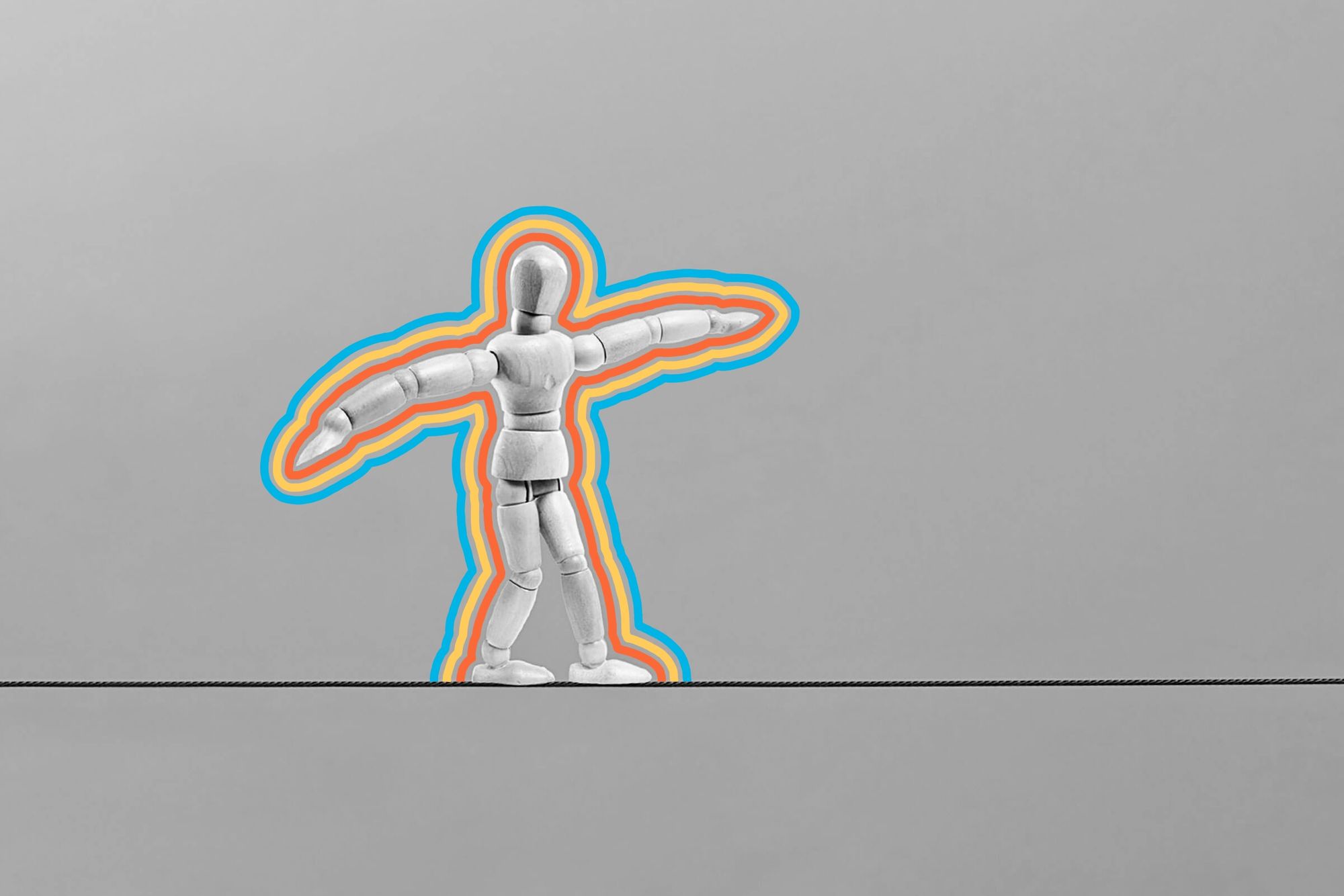

We’ve all heard that we have five senses — sight, smell, hearing, touch, and taste. That idea goes back to the Greek philosopher Aristotle. However, it’s wrong.
Modern science has identified as many as 32 senses, by looking at receptors in our bodies with the job of receiving and conveying specific information. Our senses also tend to work in tandem without us noticing a connection. We mostly take this intricate system for granted — until something goes wrong, and we gain a deeper appreciation of the complexity of the human body. Learning more about our senses can help us both understand health problems and appreciate the many ways our bodies perform beautifully. Here are six senses you probably didn’t know you possess.
Vestibular Sense (Equilibrioception)

The vestibular sense is one of balance and orientation. Whenever we move our heads, we activate a set of receptors in the inner ear that allow us to balance. The vestibular sense is also activated by the downward force of gravity. It allows us to know which way is up or down, right or left.
Balance exercises can help boost the vestibular sense, which begins to decline after age 40. That’s why the elderly may be unsteady on their feet. Side note: “Out of body” experiences may be episodes when the vestibular sense doesn’t work normally. It’s a scary sensation, not feeling “grounded.”
Proprioception

Our muscles and joints contain receptors that deal with how our bodies occupy space. These proprioception receptors make it possible to walk down the street without constantly banging into someone (although cell phones don’t help), climb stairs without looking down, or touch our fingers to the tip of our noses.
These same receptors provide feedback about how our muscles are affecting the environment. A child who uses too much force when writing or coloring, for example, may need proprioception coaching. Football players, on the other hand, are proprioception experts. They move fluidly around obstacles, seeing them from afar, and know exactly how hard to throw the ball.
Inner Sensing (Interoception)

People also vary a great deal in their awareness of inner body signals, known as interoception. Someone who doesn’t pick up on stomach fullness may eat or drink too much. Someone who doesn’t notice a stomach rumbling may eat too little. Children with autism spectrum disorder (ASD) sometimes need to be reminded to eat, for example. We also notice when our hearts are beating faster or when we need the toilet.
Meditation practices that teach us to notice our breathing are, in effect, boosting our awareness of one kind of interoception signals, a system of body-wide receptors that communicate with a spot deep in the brain called the insular cortex. This inner sensing doesn’t just tell us if we’re hungry or tired. It allows us to note our own emotions, which often begin as physical sensations. That’s why meditation can help with both body awareness and emotional self-knowledge.
Thermoception

We have special receptors in our skin that communicate with an area in the hypothalamus (known as the thermoregulatory center) to monitor temperature. There are at least six different kinds of external temperature receptors in our skin, each designed for a different temperature range. If the air gets cold, the appropriate cold receptors fire more to signal a change.
If receptors for outer temperature are exposed to a sensation for a long time, they stop firing as much. That’s why we can get used to cold if we’re patient. But nerve damage can take that too far, and lead us to miss important information. People who don’t feel cold sufficiently can get frostbite or, if they don’t feel heat quickly enough, a bad burn.
Nociception

We actually know we have this one — it’s called pain. But for some time, pain wasn’t understood as being its own sensory system. Pain receptors can be classified into three distinct types: cutaneous (skin), somatic (bones, joints, muscles, and beyond), and visceral (body organs).
People vary in what’s called their “pain tolerance.” Nociceptors each have a minimum intensity of stimulation before they trigger a signal that gets passed along into the spinal cord to the brain. Different kinds of nerve fibers are responsible for fast, localized, sharp pain and slow, poorly localized, dull pain.
Time

We speak of a “body clock,” but actually our bodies are full of clocks with different functions. Our circadian clock is tuned to the rise and fall of daylight and is disrupted when we cross several time zones or lose sleep. Other clocks are tuned for tiny intervals. Our sleep includes multiple 90-minute cycles; we have rhythms for blood pressure, hormone secretion, heart rate, and more.
But how do we perceive time? It’s a mystery. Many people have had the experience of waking up a second before the alarm goes off when they’re nervous about catching a plane — even if that’s not their usual wake-up time. Somehow, we can perceive time accurately while asleep. Some people know exactly how long a conversation has lasted and others have no idea. When we’re bored, time moves slowly. When we’re intensely engaged, time seems to stop and hours pass. Scientists are pinpointing areas of the brain that may provide our sense of time through body processes like breathing and heart rate. Although we don’t know how we perceive time, it’s clear that we do have a sense of time passing.
